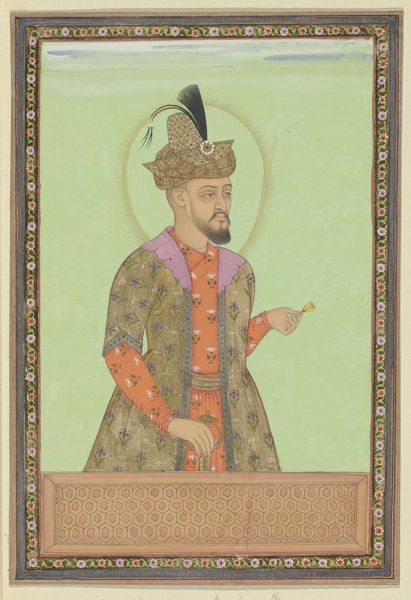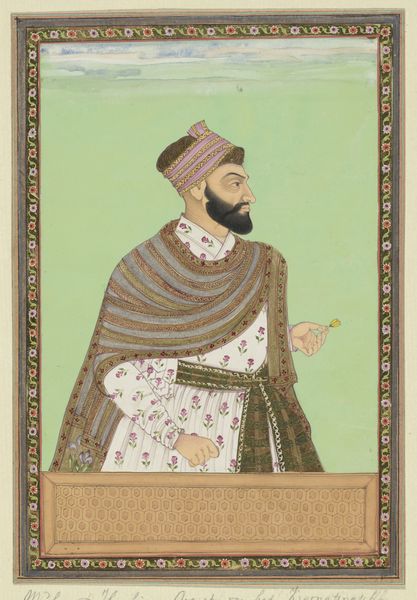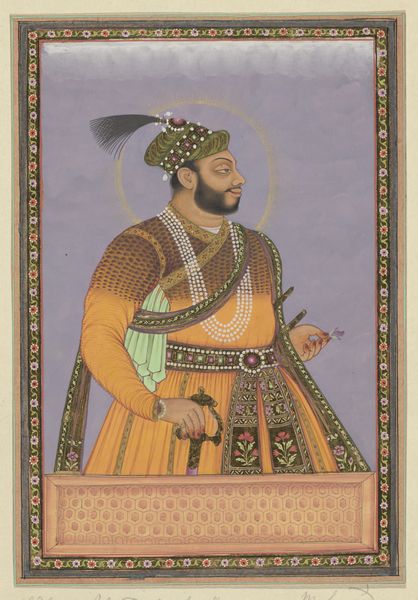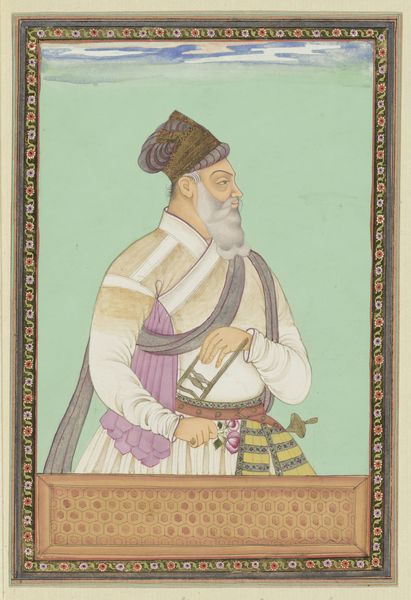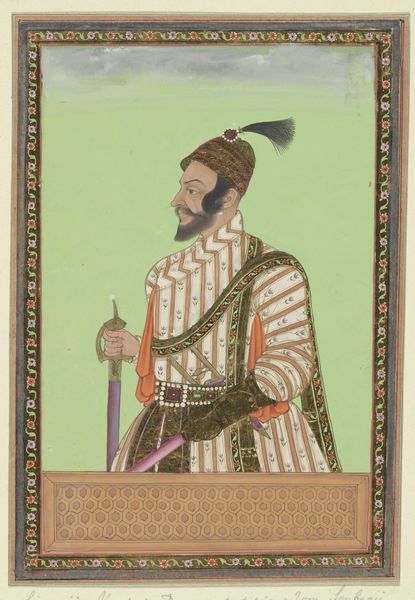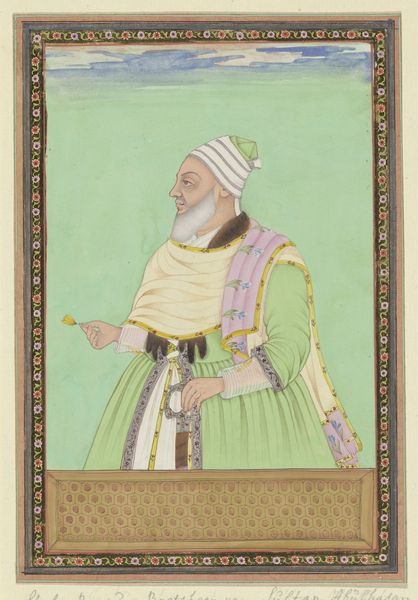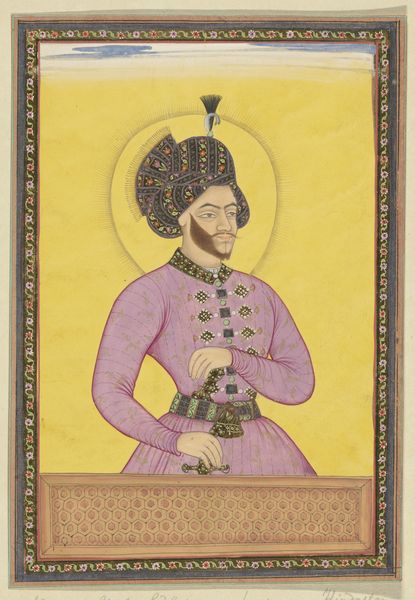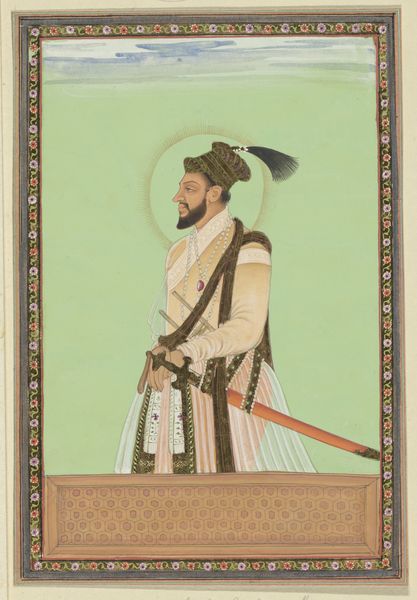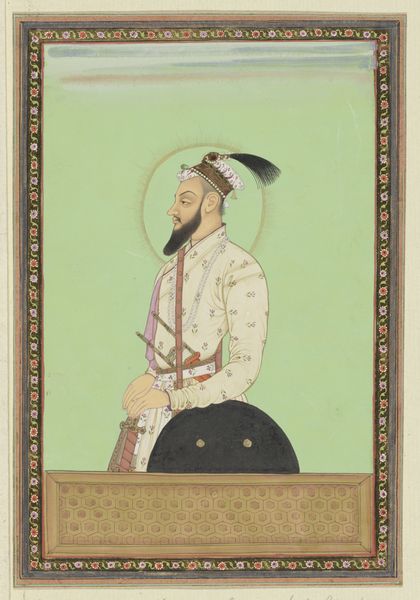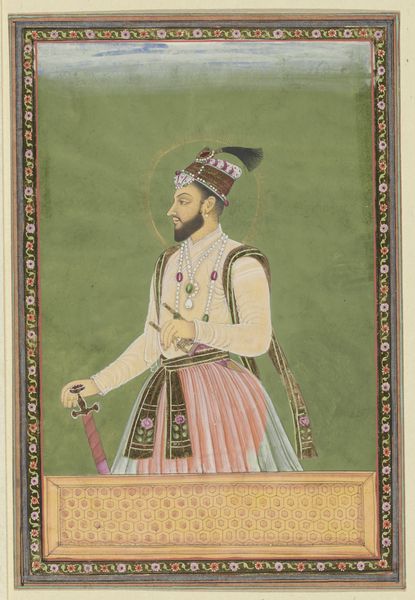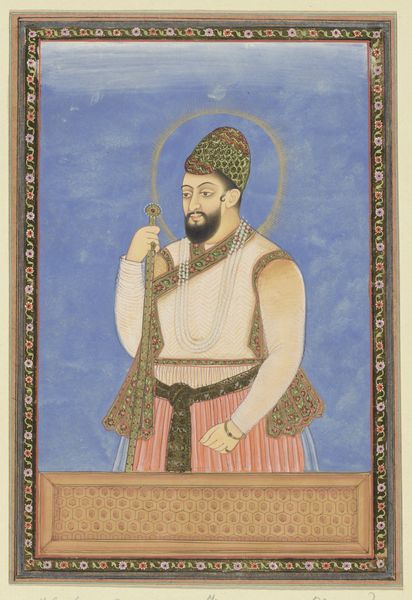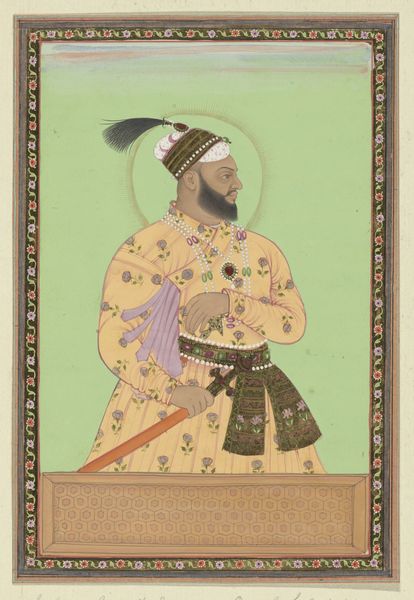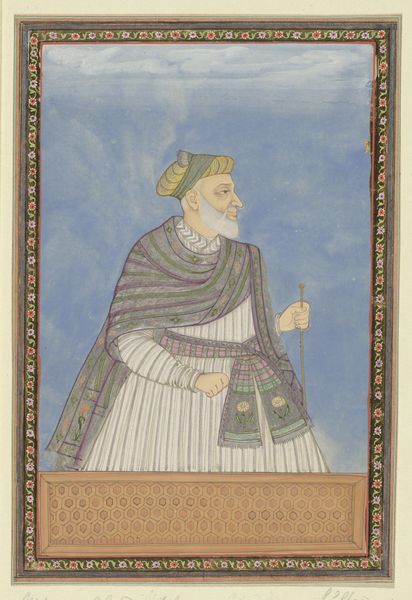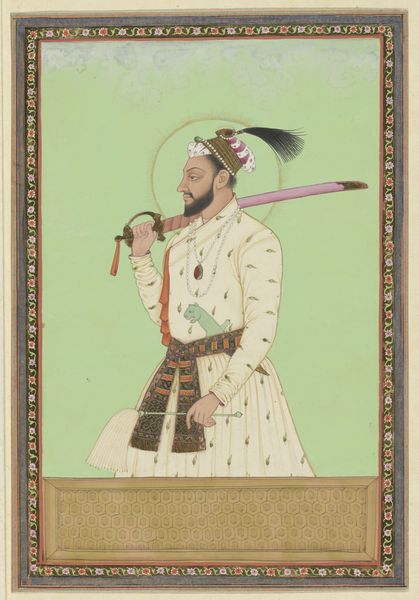
Portret van Sultan Abdullah, zoon van Sultan Muhammad-Quli; na zijn vader heeft hij over Golconda geregeerd c. 1686
0:00
0:00
anonymous
Rijksmuseum
painting, watercolor
#
portrait
#
water colours
#
painting
#
watercolor
#
islamic-art
#
miniature
#
watercolor
Dimensions: height 203 mm, width 140 mm
Copyright: Rijks Museum: Open Domain
Curator: The piece before us is an anonymous watercolor portrait, made around 1686, of Sultan Abdullah, who once ruled Golconda. Look closely at how it captures a regal presence despite its diminutive scale. Editor: He does seem a little weary, doesn’t he? Perhaps that’s what grabs me most at first—that melancholy air. It’s not the proud stance, or even the luxurious garb, but the expression of a man who knows the weight of a crown, literally or metaphorically. Curator: Indeed. There’s an interesting interplay between the presentation of power—note the halo, the turban with its plume—and that deeply human expression you observed. Consider the artistic context: courtly portraiture often served a specific political function. Editor: Oh, absolutely. Portraits like this were currency, symbols. This man—or rather, his image—would have moved through the world carrying authority, establishing diplomatic ties. I wonder, though, if this wasn't made after the fall of Golconda and thus functions to reassert lost power and status. Curator: Intriguing thought. That could explain the reflective mood, rather than boastful display. Technically, what stands out is the meticulous detail despite the artist remaining unknown. Each gem, each fold of fabric, lovingly rendered with watercolors to achieve a soft glowing quality. And while flat, the geometric rendering on the panel behind which he poses adds to this impression. Editor: Yes, those fine lines give it almost a jewel-like effect. He feels both grand and accessible simultaneously. I'm caught up by how the detail focuses our gaze on his humanity rather than just his station. It makes me think about our relationship with rulers, throughout history. It seems our desire to see the ‘man behind the throne’ is, paradoxically, age-old. Curator: Well said. Art continually allows us to reassess how we understand these historical figures in light of contemporary sensibilities. The power of an image to resonate and reframe is really at the core of its social significance. Editor: Absolutely. Looking at Sultan Abdullah, I see not just a ruler, but also a fellow human, framed in delicate artistry across the centuries. He might well have secrets or experiences not totally different to my own. Curator: Thank you. A profound and empathetic note on which to conclude.
Comments
No comments
Be the first to comment and join the conversation on the ultimate creative platform.
